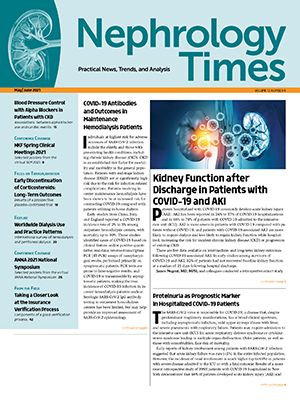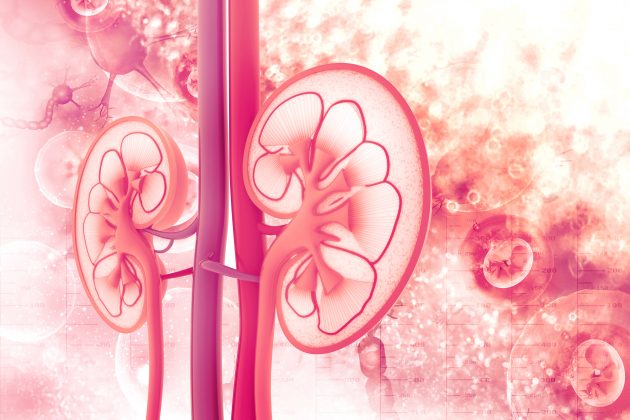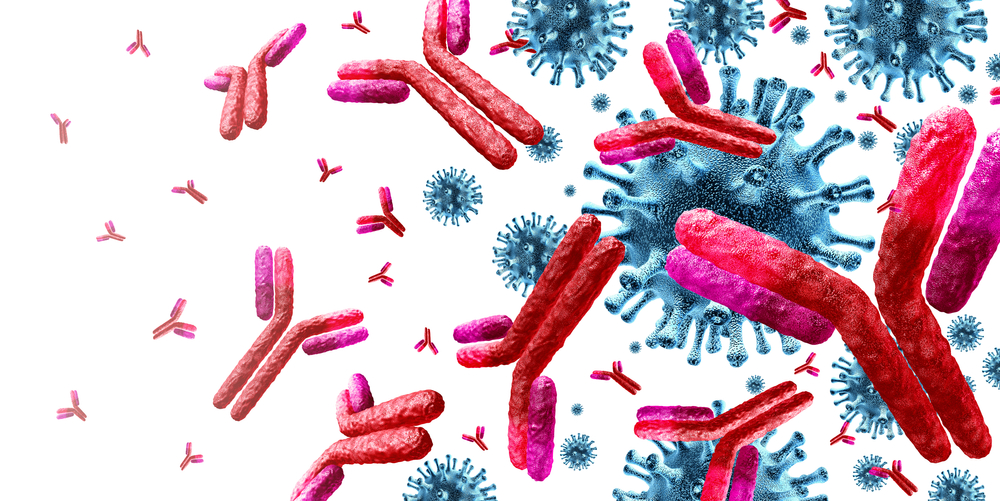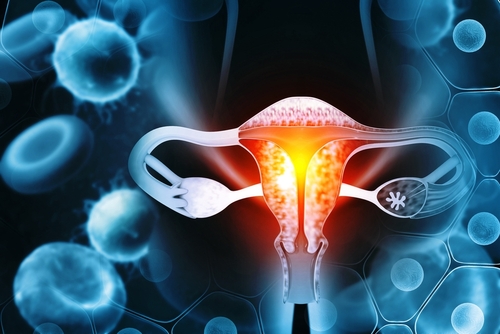NKF Spring Clinical Meetings 2021
In patients with pulmonary arterial hypertension (PAH), volume overload is a frequent and early complication in the absence of overt kidney dysfunction. Volume overload is associated with progression to right heart failure. There are few data available on the pathophysiology of volume overload and the role of the kidneys in sodium and water retention.
Shweta Bansal, MD, and Ahmad Altarawneh, MD, conducted a chart review to identify factors associated with volume overload in patients with PAH. Results of the chart review were reported during a virtual poster session at the NKF Spring Clinical Meetings 2021 in a poster titled Cardiorenal Syndrome in Pulmonary Arterial Hypertension.
The researchers reviewed charts of 32 consecutive patients with PAH. Patients on loop diuretic were considered to be volume overloaded. Repeated measures of clinical and laboratory variables recorded at the time of each right heart catheterization (RHC) were included in the analysis. Independent t-test was used for comparisons between patients on diuretics and those not on diuretics for normally distributed variables. The Mann-Whitney U test was used to compare nonparametic variables.
Mean age at last follow-up was 51.2 years, 100% were White, 94% were female, and mean estimated glomerular filtration rate (eGFR) was 93 mL/min/1.73 m2. Follow-up was a median of 4 years. Fifty-six percent of the patients were on a diuretic.
Patients in the diuretic group were significantly more edematous (1.24 vs 0.27 score; P=.005), had higher body mass index (30.5 vs 25.1 kg/m2; P=.002), and covered less distance on the 6-minute walk test (360 vs 420 meters; P=.012) compared with patients in the no-diuretic group.
There were no differences in age, sex, blood pressure, New York Heart Association class, or oxygen saturation. On RHC, right arterial pressure was significantly higher (7.9 vs 3.8 mmHg; P=.006) and there was a trend toward higher mean pulmonary artery pressure (49 vs 42 mmHg; P=.08) in the diuretic group compared with the no-diuretic group. There was no difference in cardiac index or pulmonary vascular resistance.
In the diuretic group, serum alkaline phosphatase was higher than in the no-diuretic group (106.8 vs 76.2 U/L; P=.02). There were no differences in other blood work, including brain natriuretic peptide and eGFR. There was no difference in the proportion of patients on PAH-specific therapies.
“High body mass index and right arterial pressure, well-known factors associated with cardiorenal syndrome and volume overload in other edematous disorders, were applicable in our PAH cohort as well as suggestive of the presence of similar pathways of impaired natriuresis despite normal GFR. Further studies are required to confirm these pathways which can guide appropriate early-on therapeutics,” the researchers said.
Source: Bansal S, Altarawheh A. Cardiorenal syndrome in pulmonary arterial hypertension. Abstract of a poster presented at the National Kidney Foundation virtual Spring Clinical Meetings 2021 (Abstract #177), April 9, 2021.
Credit: Original article published here.










